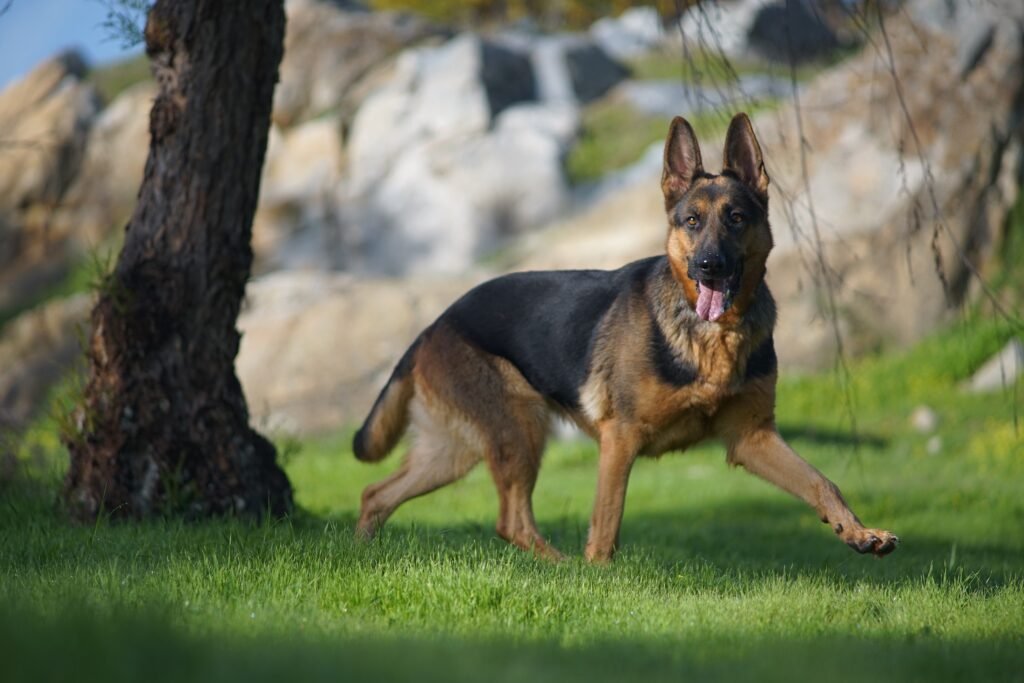The German Mastiff (Γερμανικός Μολοσσός), also known internationally as the Great Dane, is one of the most recognizable dog breeds in the world. Towering in height yet famously gentle in temperament, this breed has earned the nickname “gentle giant.”
In this article, we’ll explore the fascinating history, defining characteristics, and essential care tips for anyone considering welcoming this noble breed into their home.
The History of the German Mastiff
Ancient Origins
Large dogs resembling the German Mastiff can be traced back to ancient civilizations. Egyptian carvings, Roman hunting records, and Greek literature describe massive dogs used for guarding and hunting. These early ancestors laid the foundation for the breed we recognize today.
Development in Germany
In the 16th century, German nobles began selectively breeding large hunting dogs. They wanted animals powerful enough to chase wild boars but also elegant enough to live in aristocratic households. By combining mastiff-type strength with greyhound agility, breeders created the foundation of the modern Γερμανικός Μολοσσός.
The breed was officially standardise in Germany in 1880 under the name Deutsche Doge. Outside of Germany, it became more widely known as the Great Dane, though it has no true Danish roots.
Physical Characteristics
The German Mastiff is admired for its noble and majestic appearance:
- Height: 28–35 inches (72–90 cm), often making it one of the tallest dog breeds.
- Weight: 100–200 pounds (45–90 kg).
- Build: Strong yet elegant with a muscular but lean frame.
- Coat Colors: Fawn, brindle, blue, black, mantle (black and white), and harlequin (white with black patches).
- Expression: Alert, intelligent, and friendly eyes that reveal its affectionate personality.
Fun fact: Guinness World Records often lists Great Danes as the tallest dogs on Earth, with some reaching over 44 inches in height!
Personality and Temperament
Despite its size, the Γερμανικός Μολοσσός is known for its gentle nature. Families around the world cherish this breed for its affectionate personality and protective instincts.
- Affectionate and loyal – Loves spending time with family and often bonds deeply with one person.
- Gentle with children – Patient and tolerant, but due to its size, supervision is always recommended.
- Protective but calm – Naturally alert without being unnecessarily aggressive.
- Sociable – With proper training and socialization, they get along well with other pets.
This unique combination of power and kindness makes the breed a true family companion.
Caring for a German Mastiff
Nutrition
Because of its size, proper diet is crucial. Owners should focus on:
- High-quality large-breed dog food.
- Balanced calcium and protein for bone development.
- Controlled portions to prevent obesity and joint stress.
Exercise
While large and athletic, the breed does not need extreme exercise. Daily walks and moderate playtime are enough. Puppies, however, should avoid excessive running to protect growing bones.
Health Considerations
Unfortunately, large breeds like the Γερμανικός Μολοσσός are prone to certain health conditions, including:
- Hip and elbow dysplasia
- Bloat (gastric torsion)
- Heart disease
- Bone cancer (osteosarcoma)
Regular veterinary care and preventive health checks are essential.
Grooming
Grooming is simple due to their short coat. Weekly brushing and occasional baths are enough to keep them clean. Regular nail trimming and dental care are also recommended.
Is This Breed Right for You?
Owning a German Mastiff is rewarding but comes with responsibilities:
- Space: They need room to move comfortably; apartments can be challenging.
- Costs: Food and veterinary care can be more expensive than for smaller breeds.
- Commitment: Their average lifespan is 7–10 years, and they require consistent care and companionship.
Conclusion
The German Mastiff (Γερμανικός Μολοσσός) is more than just a large dog. It is a breed with a rich history, a noble appearance, and a heart full of affection. Known worldwide as the gentle giant, this dog embodies both strength and tenderness, making it one of the most cherished companions for families across the globe.
FAQs
Q1: Is the German Mastiff good with children?
Yes. They are known for their patience and affectionate nature. However, supervision is important due to their large size.
Q2: How much exercise does this breed need?
One or two moderate walks daily and some playtime are enough. They are not overly energetic but enjoy companionship.
Q3: How long does the German Mastiff live?
On average, 7–10 years. With proper diet, exercise, and healthcare, some may live slightly longer.

